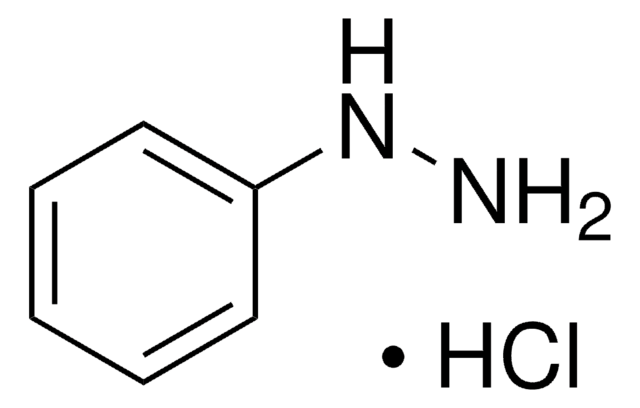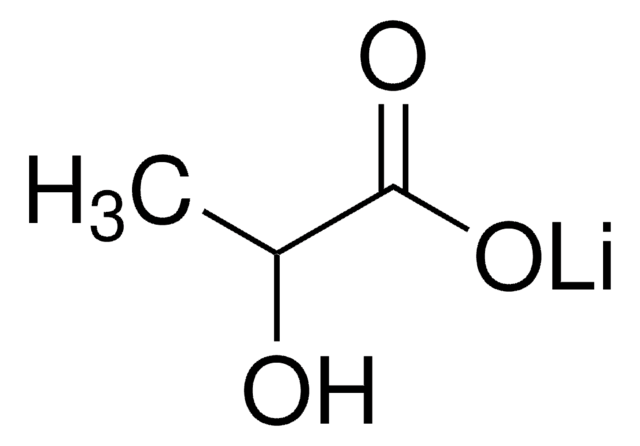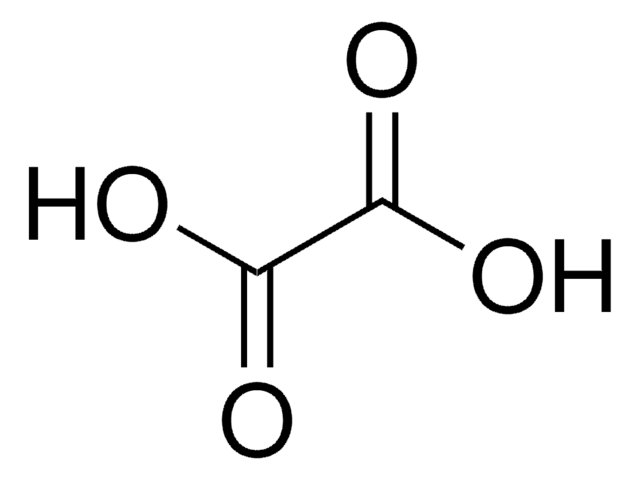Kluczowe dokumenty
M4128
Mercury(II) thiocyanate
96.5-103.5% (titration)
Synonim(y):
Mercuric isothiocyanate, Mercuric sulfocyanide, Mercuric thiocyanate, Mercury di(thiocyanate), Thiocyanic acid, mercury(II) salt
About This Item
Polecane produkty
Poziom jakości
Próba
96.5-103.5% (titration)
przydatność reakcji
core: mercury
reagent type: catalyst
mp
165 °C (dec.) (lit.)
gęstość
3.71 g/mL at 25 °C (lit.)
ciąg SMILES
N#CS[Hg]SC#N
InChI
1S/2CHNS.Hg/c2*2-1-3;/h2*3H;/q;;+2/p-2
Klucz InChI
GBZANUMDJPCQHY-UHFFFAOYSA-L
Szukasz podobnych produktów? Odwiedź Przewodnik dotyczący porównywania produktów
Opis ogólny
Zastosowanie
- Polymeric mercury(II) coordination complexes with various derivatives of 4,4′-bipyridine ligands via the branched tube method.
- Manganese mercury thiocyanate (MMTC), an organometallic optical single-crystal.
- Heterotrinuclear copper(II)–mercury(II)–copper(II)complexes possessing antibacterial and antifungal activities.
Jakość
Hasło ostrzegawcze
Danger
Zwroty wskazujące rodzaj zagrożenia
Zwroty wskazujące środki ostrożności
Klasyfikacja zagrożeń
Acute Tox. 1 Dermal - Acute Tox. 2 Inhalation - Acute Tox. 2 Oral - Aquatic Acute 1 - Aquatic Chronic 1 - STOT RE 2
Zagrożenia dodatkowe
Kod klasy składowania
6.1A - Combustible acute toxic Cat. 1 and 2 / very toxic hazardous materials
Klasa zagrożenia wodnego (WGK)
WGK 3
Temperatura zapłonu (°F)
248.0 °F - closed cup
Temperatura zapłonu (°C)
120 °C - closed cup
Wybierz jedną z najnowszych wersji:
Masz już ten produkt?
Dokumenty związane z niedawno zakupionymi produktami zostały zamieszczone w Bibliotece dokumentów.
Klienci oglądali również te produkty
Nasz zespół naukowców ma doświadczenie we wszystkich obszarach badań, w tym w naukach przyrodniczych, materiałoznawstwie, syntezie chemicznej, chromatografii, analityce i wielu innych dziedzinach.
Skontaktuj się z zespołem ds. pomocy technicznej











